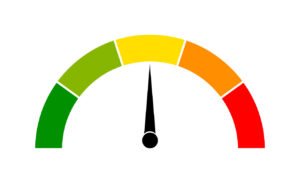Curating the week in wellness March 15th –19th 2021: How Delta is supporting its employees; Predicting Biden admin policies, and more
The week’s essential content and fresh industry pickings for those dedicated to employee well-being.

Good morning, wellness champions!
We hope you enjoy this week’s enriching content and thought-provoking articles.
As always, please get in touch with any ideas, suggestions or feedback on how we can serve you better. We are grateful for your partnership and for all the excellent work you do.
1. Anticipating Biden administration policy targets that might affect you.
EHS Today shares guidance on what to expect in the next four years, including:
- Heightened pressure for climate change response, ranging from risk disclosures to increased infrastructure spending.
- Responses to ongoing supply chain and business continuity challenges including addressing personal protective equipment (PPE) and essential worker shortages; vaccine distribution security; and production reshoring incentives.
- Worker mental and physical health impacts because of the pandemic, an aging workforce and changing employment relationships (e.g., remote, virtual and gig economy workforces).
- Increased environmental, health and safety enforcement activities including publishing occupational health and safety violators, more significant enforcement citations and criminal prosecutions (e.g., corporate executive liability).
EHS Today also notes:
“Since the Biden administration has already signaled its concerns with the health and well-being of the workforce, it is likely it will increase funding for further research, awareness and initiatives from government agencies such as the National Institutes of Health (NIH) and the National Institute of Occupational, Safety and Health (NIOSH). NIOSH is already leading the way with research and tools for businesses through its Total Worker Health and Healthy Work Design and Well-Being (HWD) programs.”
It also adds the following suggestions to “promote total worker health”:
- Assess the health, safety and mental health of employees. Identify what workplace factors are affecting them via employee participation surveys and 1:1 meetings between managers and their direct reports.
- Review existing mental health and wellness resources available to employees and determine how they are being used as well as their efficacy.
- Evaluate current healthy workplace models and frameworks such as NIOSH’s Total Worker Health and management systems standards such as ISO 45001 Occupational Health and Safety, ISO/PAS 45005 General Guidelines for Safe Working During the COVID-19 Pandemic, and the forthcoming TWH voluntary standard being developed by ANSI & ASSP for long-term health.
- Invest in professional development and training on various healthy workplace models and mental health programs to see what may fit best within your organization.
2. How Delta is pursuing employee well-being.
The pandemic has been absolutely devastating for airlines, but Delta continues to step up to help its employees.
The Saporta Report notes that the airline has shared more than $1 billion in profits over the last six years, and now—even as COVID-19 continues to hammer its business—Delta is expanding its partnership with Operation HOPE to bolster employees’ financial wellness.
The Saporta Report writes: “Through HOPE Inside the Workplace, specialized workshops focused on credit and money management and one-on-one debt counseling and financial coaching are made available to employees free of charge. With this latest announcement, Operation HOPE’s virtual coaching services will be available to the entire Delta workforce of 80,000 employees in key hub cities, starting with the largest base – Atlanta.”
3. Key components of a robust wellness strategy.
Tech Target lists 10 crucial factors that can make or break your program:
- A holistic approach
- Leadership buy-in
- An understanding of current offerings
- An awareness of employee sentiment
- A focus on incremental behavioral changes
- An insight into well-being motivation
- Metrics and measurement
- Goals to define success
- Transparent communication with employees
- Inclusion of organizational values
4. Wellness and the future of work.
Forbes shares:
“Every company’s approach [to wellness] must match its culture and situation. But overall, the best solutions are strategic, holistic and integrated into the fiber of the organization. They must also evolve—given that what works today may not work tomorrow.”
Forbes cites how companies such as KPMG, Monster and Wiley are helping employees weather the storm of the pandemic.
“Wiley and Monster both provide access to teaching and tutoring resources to support parents who are facilitating learning with their children, for example. And both companies offer the use of Care.com for employees providing care to elders or who need backup or emergency childcare. Similarly, KPMG has provided enhanced parental and caregiver support.”
Forbes continues:
“Wiley, Monster and KPMG are also offering apps to help employees with things like mediation, sleep, education or online therapy. Wiley offers education and coaching to support financial wellbeing, and Monster links employees via an app to encourage healthy eating, exercise and participation in physical challenges.”
KPMG’s Compassionate Candor program, which “fosters feedback, challenging conversations, openness, compassion and storytelling,” is another example of getting creative with your wellness offerings.
5. Ensuring greater DE&I transparency, accountability and action.
You’ve issued statements, you’ve made commitments to “do better.” Now what?
One savvy move is to see what others are doing. Nike and McDonalds are tying executive compensation to DE&I goals, IBM invests heavily in employee resource groups, and Digiday writes how agencies are getting more intentional about inclusive recruiting and promoting practices.
JD Supra also offers these five suggestions:
- Examine the schools or groups with which you advertise your positions. Do those schools include Historically Black Colleges and Universities (HBCUs)? Is your organization attending recruiting events held by diverse organizations and affinity groups?
- Review your job descriptions to make sure a commitment to diversity and inclusion is an essential requirement of every position. Do your job requisitions make clear that you expect all employees to promote a diverse and inclusive work environment?
- Reconsider your referral sources. Are your organization’s female and Black employees referring their contacts and colleagues for open positions at the same rate that their male and/or White employees are referring them?
- Train your hiring managers on strategies to check implicit biases. If your hiring managers believe particular candidates do not demonstrate the skills or commitment for particular roles, are they trained to question whether they would come to the same conclusion if the candidates were of a different race, or gender, or age?
- Ensure that your hiring and interviewing team is as diverse as possible. Does the slate of interviewers and decision-makers for each role convey to candidates that the team takes diversity seriously?
6. Wildcat-style wellness.
The University of Kentucky limped to one of the worst hoops seasons in its storied program’s history this year, but the school is succeeding in other important matters. UK has won an award for its wellness efforts, which include:
- Three different MoveWell fitness memberships with in-person, virtual or all-access options.
- Free EatWell memberships tailored to help you meet your nutritional goals.
- Individual well-being coaching and group meetings through BeWell.
- Consults with fitness specialists, registered dietitians and health coaches.
- KORU mindfulness classes and mindful self-compassion workshops.
- Weekly Facebook live fitness, meditation and mindfulness events.
- A Community Supported Agriculture voucher program.
- Monthly “Becoming Wildly Resilient” podcast.
- Working Parents Network with coffee chats, presentations and social media posts.
- Elder care and caregiver support.
- Mental health counseling for employees and family members.
- Virtual Well-Being Check Ins.
National titles are great, but healthy employees are better.
7. Bolstering employees’ mental health.
The Kaiser Family Foundation reports that 4 in 10 U.S. adults have reported symptoms of anxiety and depression since the pandemic took hold — which is up from 1 in 10 adults the year before.
The North Bay Business Journal offers a trove of guidance on handling delicate mental health topics, including do’s and don’ts for navigating tough conversations:
Do
• Follow the person’s lead in terms of what they want to share.
• Think carefully about what type of flexibility you can offer them.
• Make clear that you may need to discuss the situation with HR, and therefore may not be able to keep the conversation confidential.
Don’t
• Make a big deal about the disclosure. It’s important to normalize the conversation.
• Overpromise what accommodations you’ll be able to give the person until you’ve had time to think it through and talk to HR.
• Hide your own experience with mental health challenges, especially if you’re a senior leader.
The piece also touts the importance of training managers to spot signs of stress. You should also consider creating a “central cache of resources for employees”—which might include short video tutorials or could entail an overhaul of your existing programs.
8. How to empower employees.
Training Journal lists seven ways to keep employees feeling hopeful, inspired and motivated:
- Cut through the clutter, and stop the firehose of information.
- Consistently send uplifting, timely communication.
- Support meaningful wellness goals.
- Connect job goals to business strategy.
- Promote learning and development opportunities.
- Consider employees’ emotional needs.
- Measure impact, and give employees consistent feedback.
9. Long-term hope for wellness programs.
A Finnish study has found that “A multiyear workplace health promotion program can slow down the increase in health risks for working-age people.”
Antti Äikäs, a doctoral student at the University of Jyväskylä who headed up the research, said, “Our research showed that in the long run we can prevent people in the low- or moderate-level risk groups from transitioning into the group of high-level health risks.” Whether you’re in Helsinki or Helena, that’s good news for well-being pr







